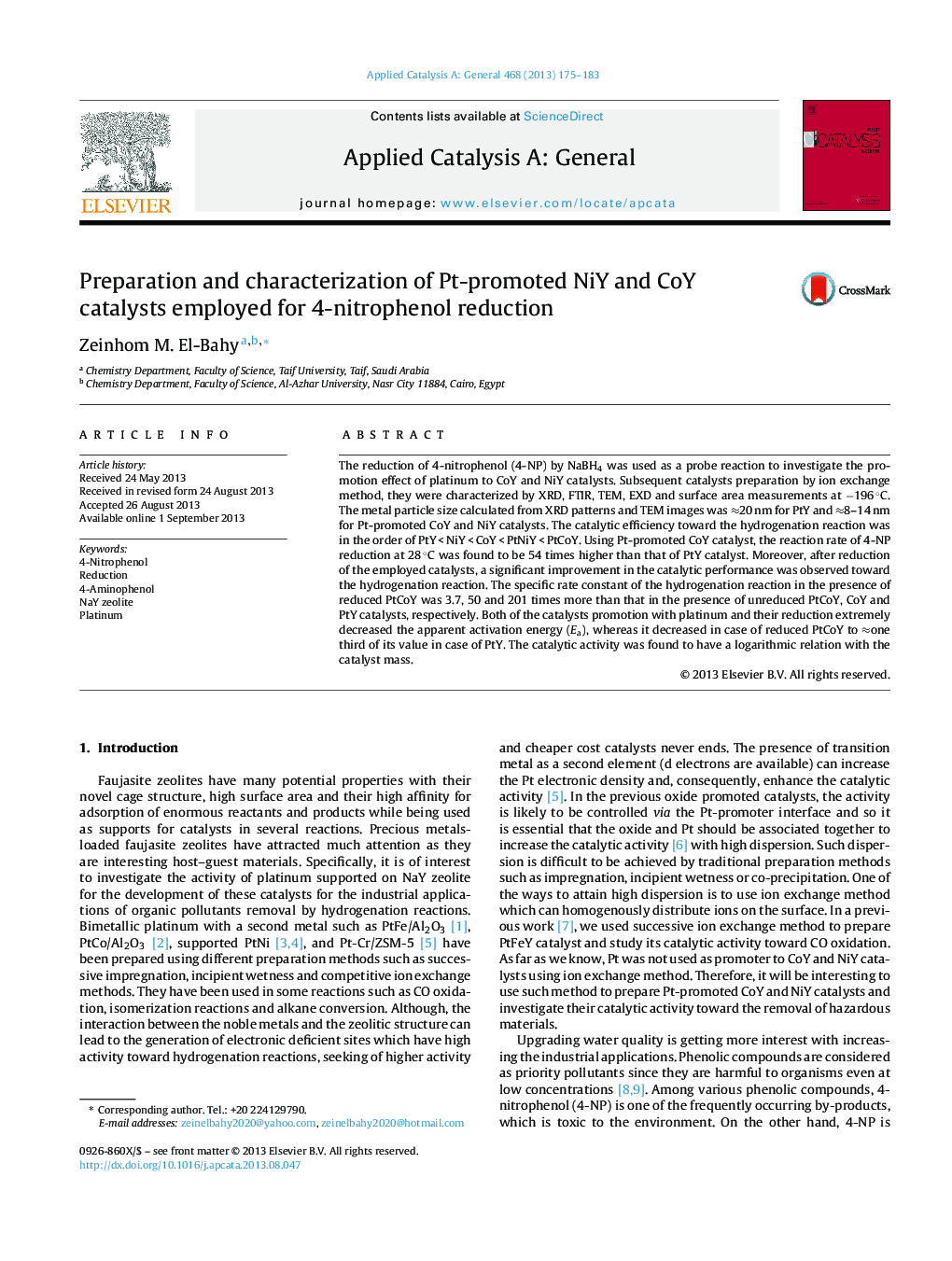| Article ID | Journal | Published Year | Pages | File Type |
|---|---|---|---|---|
| 40249 | Applied Catalysis A: General | 2013 | 9 Pages |
•Co- and NiY has been promoted by Pt and have been prepared by ion, exchange method.•Catalysts were characterized by XRD, TEM, FTIR, EDX and SBET.•Catalysts were used for reduction of 4-NP in presence of NaBH4.•The activity for 4-NP reduction was in the order of PtY < NiY < CoY < PtNiY < PtCoY.•The activity increased over the reduced catalysts.
The reduction of 4-nitrophenol (4-NP) by NaBH4 was used as a probe reaction to investigate the promotion effect of platinum to CoY and NiY catalysts. Subsequent catalysts preparation by ion exchange method, they were characterized by XRD, FTIR, TEM, EXD and surface area measurements at −196 °C. The metal particle size calculated from XRD patterns and TEM images was ≈20 nm for PtY and ≈8–14 nm for Pt-promoted CoY and NiY catalysts. The catalytic efficiency toward the hydrogenation reaction was in the order of PtY < NiY < CoY < PtNiY < PtCoY. Using Pt-promoted CoY catalyst, the reaction rate of 4-NP reduction at 28 °C was found to be 54 times higher than that of PtY catalyst. Moreover, after reduction of the employed catalysts, a significant improvement in the catalytic performance was observed toward the hydrogenation reaction. The specific rate constant of the hydrogenation reaction in the presence of reduced PtCoY was 3.7, 50 and 201 times more than that in the presence of unreduced PtCoY, CoY and PtY catalysts, respectively. Both of the catalysts promotion with platinum and their reduction extremely decreased the apparent activation energy (Ea), whereas it decreased in case of reduced PtCoY to ≈one third of its value in case of PtY. The catalytic activity was found to have a logarithmic relation with the catalyst mass.
Graphical abstractFigure optionsDownload full-size imageDownload high-quality image (132 K)Download as PowerPoint slide
